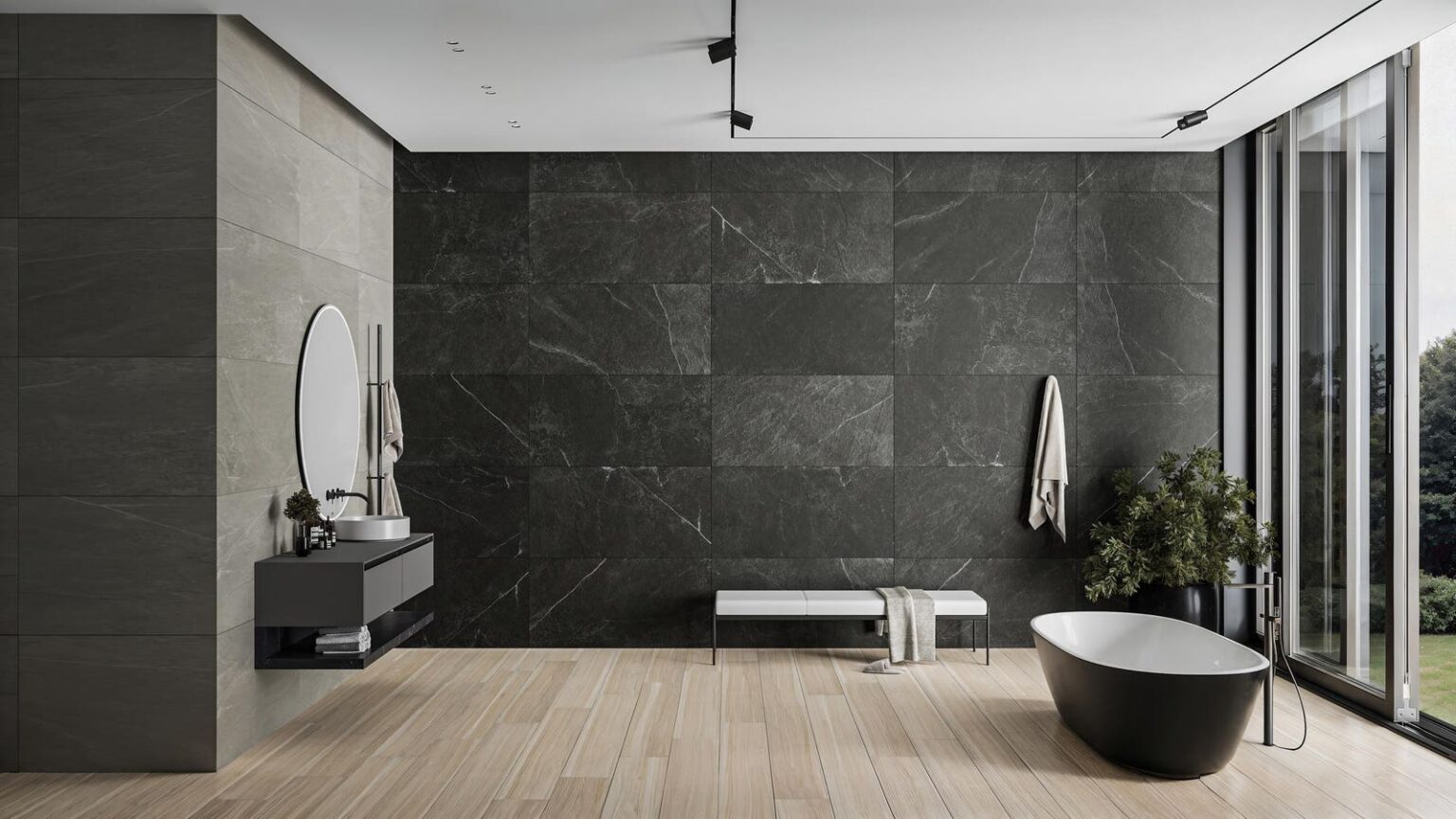Ceramic tile is one of the world’s oldest and most commonly used building products. It can form a basic floor or a magnificent wall mosaic. It can clad cabinets, countertops, pool edges, patios and even exterior walls. For a material with thousands of years of history, it’s remarkably modern and innovative. One of the most notable innovations in recent years is tile’s ability to turn a smooth surface into a rough one when it’s exposed to water. This is both a delight to bare feet and a new opportunity for safer, more slip resistant bathroom and exterior flooring.
Innovation
The capability is connected to a digital glazing process called “All Over or “In/Out” that turns baked clay slabs into finished tiles. What creates the slip resistance is a micronized silicate that is incorporated into the glaze, explains technical consultant to the Tile of Spain industry group Ryan Fasan. “What it does is increase the surface tension of water on the tile’s surface to essentially create a suction effect that increases effective coefficient of friction when the surface is wet.” Coefficient of friction (often abbreviated as COF on specification sheets) is how tiles are rated for slip resistance, with standards varying across national borders.
Example
One of the companies offering this smooth to slip-resistant finish transition technology in the U.S. is Tau Ceramica, based in the Castellon region of Spain. Its Mythe series is specifically designed for outdoor or wet areas, and was showcased at the latest Cevisama, Cersaie and Coverings tile expos, but it’s also offering it other lines.
If you’re selecting Mythe for a project where anti-slip performance is critical, it is important to choose the appropriate finish, the brand cautions. That’s a key point beyond this one brand, as some manufacturers are offering comparable glazing technology, but not qualifying it as slip resistant. Be sure to ask your design, construction or retail professional for their expertise in selecting the right material for your home.
Category Growth
Fasan estimates that 25% of Spanish brands are offering this glazing technique and sees it growing in popularity and availability in coming years. “Between home sizes shrinking and multi-family projects being a major factor in addressing the global housing affordability crisis – integration of outdoor space as living space will only increase in importance,” he predicts. “As ceramic products are one of the few products that can seamlessly transition from inside to out, I don’t believe this style of glaze is going anywhere but up in importance to consumers,” he adds. (It’s worth noting that Spain is the second largest tile exporter to the U.S., according to the Tile Council of North America, making the selection for this product category fairly large and likely growing larger.)
In regions where wildfire risk is high and high risk regions are increasing in size, this product also has the benefit of being noncombustible, offering both the potential for reduced fire risk and insurance discounts through programs like Wildfire Prepared Home.
Fall Reduction Benefits
Then there’s the life-saving fall risk reduction. According to the Centers for Disease Control, close to 80% of falls at home occur in the bathroom, and more than 200,000 older adults are treated in emergency rooms for bathroom-related injuries. (Not all are floor-related, of course, but reducing one cause can only help reduce fall counts!)
“For older adults, falls and associated injuries threaten their health, independence and quality of life. More than a third of people aged 65 and older living independently fall each year and falls are the leading cause of injury-related deaths and hospital emergency department visits,” according to an article in Injury Epidemiology.
There are many ways to reduce the risk of falls in the home. This innovation offers one more potential option.
***
Author’s Note: Fasan and Tau statements were quoted from email interviews.
Read the full article here

